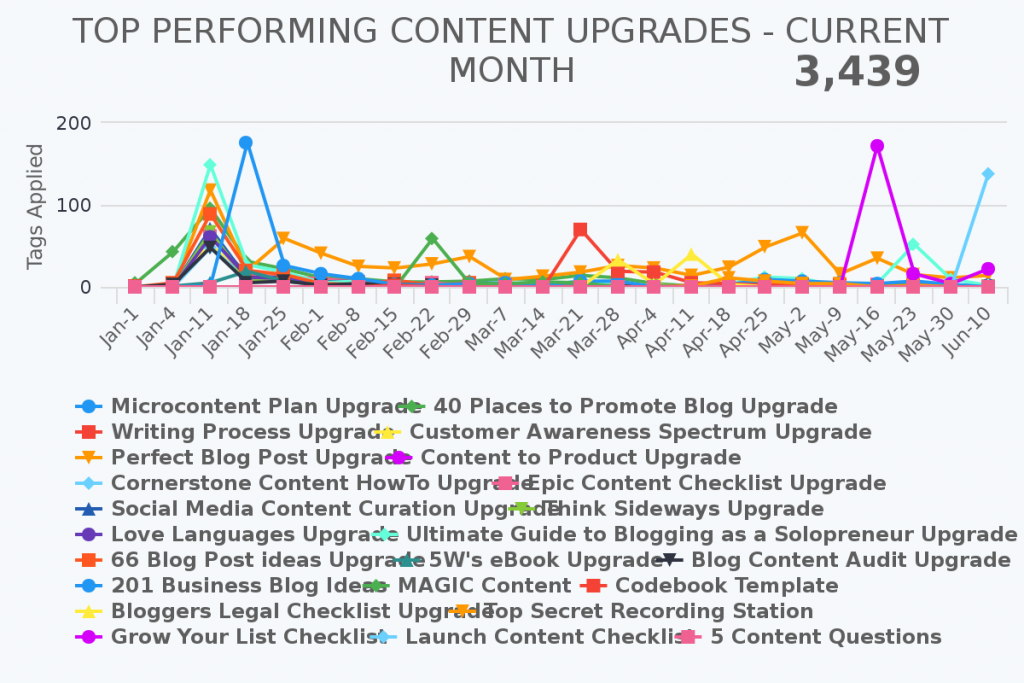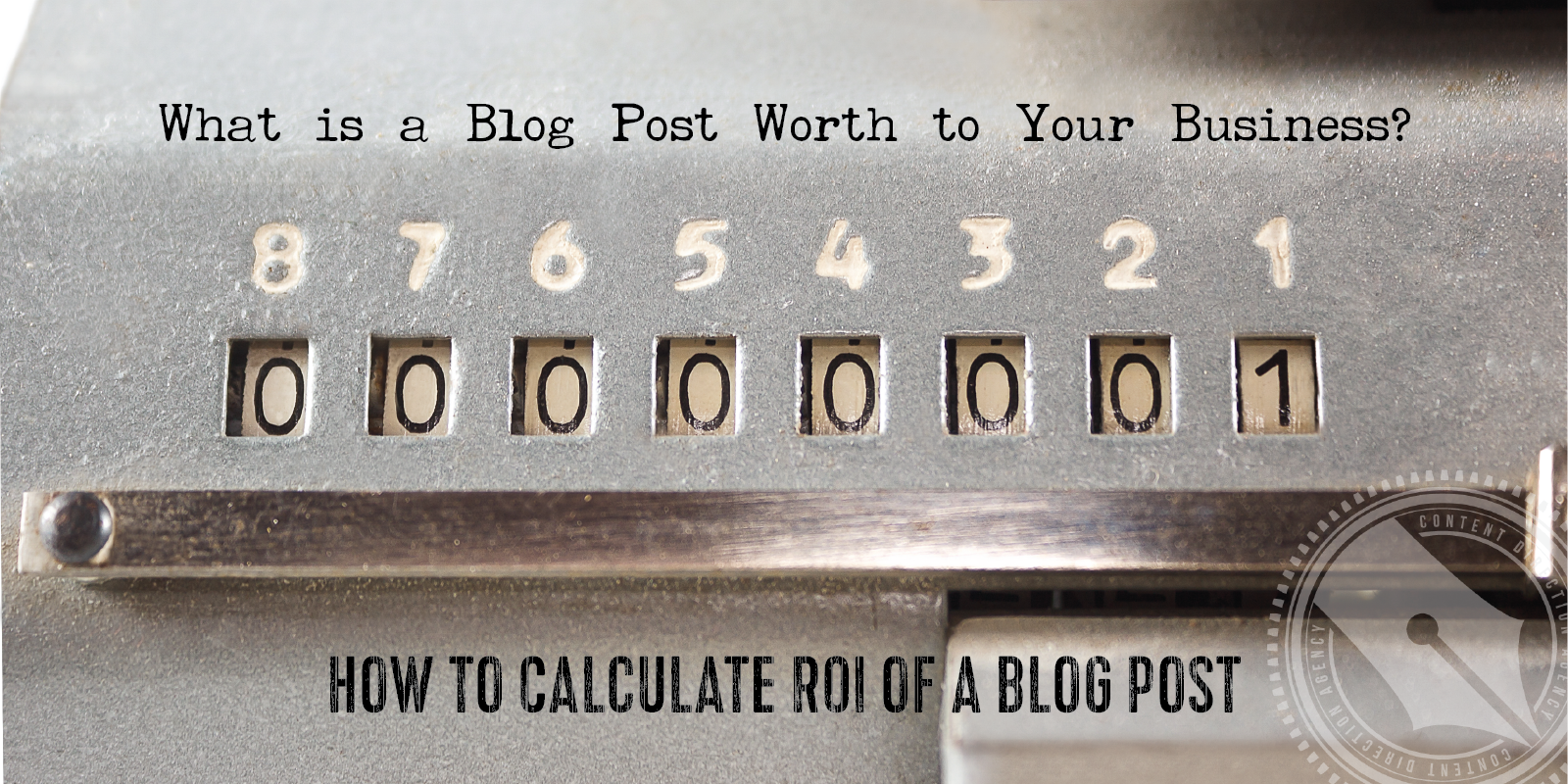How serious are you about using your blog to grow your business?
Over the last couple of weeks, I’ve been working on debunking the myth that you can’t sell from your blog. (You totally can, you just have to do it right.) Hopefully by now you’re convinced that your blog is an important part of your launch and sales strategy.
But do you actually know how much a blog post is worth to your business? Can you put a number on it? That’s the ROI of a blog post — the return on investment — and knowing yours can change your perception on blogging.
If you do it, then you should’a put a number on it — to calculate ROI of a blog post
I often find that when people are discouraged about blogging, it’s often because they don’t know why they’re doing it in the first place. Someone, somewhere told them they ought to, and so they are, but they really don’t know why.
Putting a dollar value on your blog posts gives you a nice big solid why.
But, as we’ve been discussing, a blog post very rarely directly leads to sales. For most of us, most of the time, it’s nearly impossible to say, “This blog post led to this sale and therefore was worth this amount of money to my business.”
The blog post is at the top of your sales funnel. But what you can do is look at some averages and use those averages to see what your blog post is worth.
What is an email address worth to you?
For most of us, the true goal of a blog post is collecting an email address from an opt-in. It’s a good metric to measure how well a post was received. (It’s also a good metric to measure how much promotion you got off your booty and did — but that’s a topic for another day!)
But do you know how much that email address is worth to your business?
Here’s how you find out: take your total revenue from last year and divide it by the number of email addresses you had on your list. (If you don’t have numbers from last year, you can use your current totals for this year.)
revenue / leads = value per lead
This shows you how much each email address is theoretically worth to your business.
The smaller your list compared to your revenue, the bigger the number. Also, as your list grows, the value per lead goes down naturally. Last year when I ran this number, my value per lead was around $45 — that was artificially high, because most of my revenue came from just a few VIP customers.
When I ran the numbers just now, the value per lead is closer to $14, which is much more believable and makes sense because I’ve tripled the size of my list and I’ve been focusing on driving a higher percentage of my income from products instead of 1:1 services.
Knowing how much a lead is worth is valuable in a couple of scenarios. When I buy Facebook ads, for example, I’ve been paying between $1–$5 a lead; I know this is a pretty good deal when, on average, each lead is worth $14.
Here’s a tip: don’t get caught up in what that dollar amount actually means. It’s an average, remember. I don’t have a single product that costs $14. My least expensive offer is $29, going up to thousands of dollars. But not every lead turns into a sale. So we’re just averaging this out to arrive at this number, OK?
The other great way to use this number is to calculate the ROI of your blog posts.
What is the ROI of a blog post?
Once you know what a lead is worth, it’s a simple step to multiply that dollar amount by how many leads you get from a particular post and determine it’s theoretical value.
I have my systems set up to show me exactly how many opt-ins I get from each lead magnet I produce:

As you can see, I have a lot to track. 😉
But as you can also see, I have some that do really well the week they are released (those big happy spikes of color.)
My most recent success was actually just a few weeks ago, with the Launch Content Checklist.
The week that was released, I had 138 people opt in for that content upgrade. Some of those people were likely already on my email list, but that doesn’t matter for this exercise. (You could filter out and calculate for just new leads if you want to.)
So: 138 * $14 = $1932
My blog post was worth $2,000 — and that’s just the week it was released. As you can see from the chart, certain opt-ins continue to do well after their release. If I promote or mention an old blog post, I tend to see a spike in opt-ins.
What this tells me, though, is that for that one blog post, I added $2,000 to my business. Even when I multiply out how long it takes me to write a post and how much I charge for an hour of my time, it’s still a good deal. I’m still making money on that post.
Plus, once again, this is only a rough estimate — because I can’t know how many people read that post, liked it, and clicked around and opted in somewhere else. Or how many people read that post and didn’t opt in, but came back next week and opted in on my home page, etc. etc.
What I can say, however, even just from this rough estimate, is that writing a blog is most definitely worth my time and adds money to my business. Once we calculate the ROI of a blog post, it becomes clear that they’re definitely adding to my bottom line.
What if the ROI of your blog posts is a little sad?
If you’re not happy with the ROI of your blog post, you have two options:
- You can decide that blogging is not worth your time — because, obviously, numbers don’t lie.
- Or you can change what you’re doing to improve your ROI.
How do you decide which is the right course of action for you?
First, ask yourself where you get the majority of your leads. If you get them from a general opt-in form on your website, how do you drive new traffic to your website?
Then ask yourself if you are happy with the number of leads you’re getting and the process by which you’re getting them.
Let’s say, for example, you use Instagram (or Facebook, or Twitter — it doesn’t matter) to drive traffic to your website, and from there, people have the opportunity to opt-in for leads. If you’re happy with the number of leads you’re getting, then don’t change a thing. Your content marketing strategy is working without a blog. Good on you.
If, on the other hand, you’re not super thrilled with the results you’re getting — no matter what your strategy is — then I highly suggest adding a blogging strategy to your content marketing mix. How do you do that, you may ask? Why you sign up for Content Intelligence Academy — because I teach it all in there.
Regardless of how you drive traffic to generate leads for your business, knowing the value of those leads will help you calculate the ROI of your content marketing efforts — and knowing that can help you see what’s working… and change what’s not.


Thanks for all the tips and information. Blog posts are really great for a website and they help to generate more traffic from various sources and build your business popularity online.